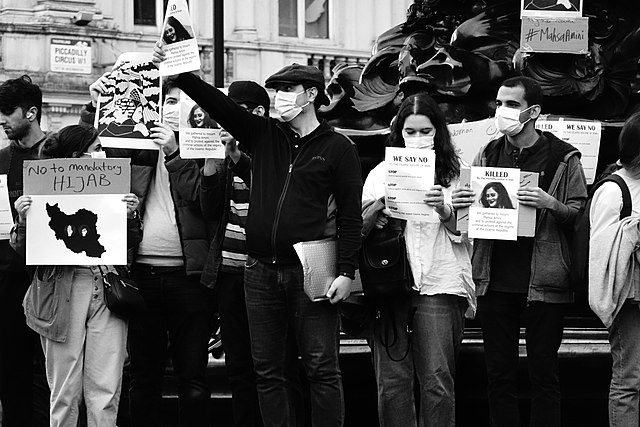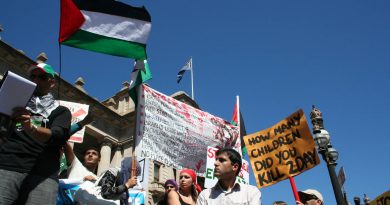Protests Erupt in Iran Following the Death of Mahsa Amini
Cat Anderson
Staff Writer
Protests have erupted in at least 46 cities, villages, and towns in Iran following the death of 22-year-old Mahsa Amini on September 16, writes NPR. Iran’s “morality police,” The New York Times states, have been in charge of enforcing the country’s conservative dress and behavior laws since the 1979 Iranian Revolution. They “apprehended” Amini and took her to a “re-education center” on September 13, claiming that she was not wearing her hijab properly, writes CNN. According to The New York Times, authorities claimed she died of a heart attack caused by preexisting health conditions, but her family denies the existence of such conditions. Many Iranians believe that photos of her in a hospital bed with a bloodied face “tell a different story” and point to police brutality.
According to CNN, the ensuing protests have resulted in dozens of deaths and over 1,200 arrests. It is important to note, however, that these numbers come from state-backed media, and therefore may not be entirely accurate. In fact, it has proven difficult to ascertain specific and accurate information regarding the protests, as government-induced internet outages have made it hard for Iranians to disseminate information and share videos both with each other and with the rest of the world, writes Reuters.
Internet restrictions are just one facet of the government’s response to the protests or as Iranian President Ebrahim Raisi has been calling them, “riots.” President Raisi and many other government officials have been swift and decisive in their condemnation of the protests, employing anti-Western rhetoric and attempting to blame the protests on both the West and left-wing groups, writes Al Jazeera. The New York Times adds that authorities have been violent towards protesters, often resorting to gun violence and tear gas. To many Iranians, the outrage over Amini’s death, as well as the government’s response, is reminiscent of other recent protests, such as the ones that occurred in 2009, 2017, and 2019.
The current protests are notable, however, for a number of reasons. First and foremost, the diversity of the voices involved is something Iran has not previously seen. The protesters, whom Al Jazeera writes are “displaying levels of anger and frustration not seen in years,” come from a variety of social, economic, and ethnic backgrounds; The New York Times adds that this diversity reflects the wide array of grievances Iranians have with their government. It continues that these protests are not just about Amini’s death, but also about corruption, economic problems, political repression, and social restrictions felt by the Iranian people. Additionally, many conservative voices have spoken up in solidarity with liberal ones, and state media has allowed reformist voices to speak in debates on at least three occasions.
Despite this it is unclear what, if anything, will actually change as a result of the protests. As CNN writes, the Iranian government is much more likely to continue to respond with violence and aggressive rhetoric than make any concessions. Additionally, the protests do not have a leader or figurehead; the protesters are primarily ordinary Iranians. CNN continues that without a leader, there is nobody who could negotiate with the government even if it would be open to such a dialogue. However, while change may not be imminent, there is hope for the Iranian people. As The New York Times states, the government may be able to quash the current protests, but until the people’s grievances are addressed, the people will likely continue to rise up and protest. These protests have happened before, and will likely continue to happen, and at some point, the government may not be able to control its people so easily.




